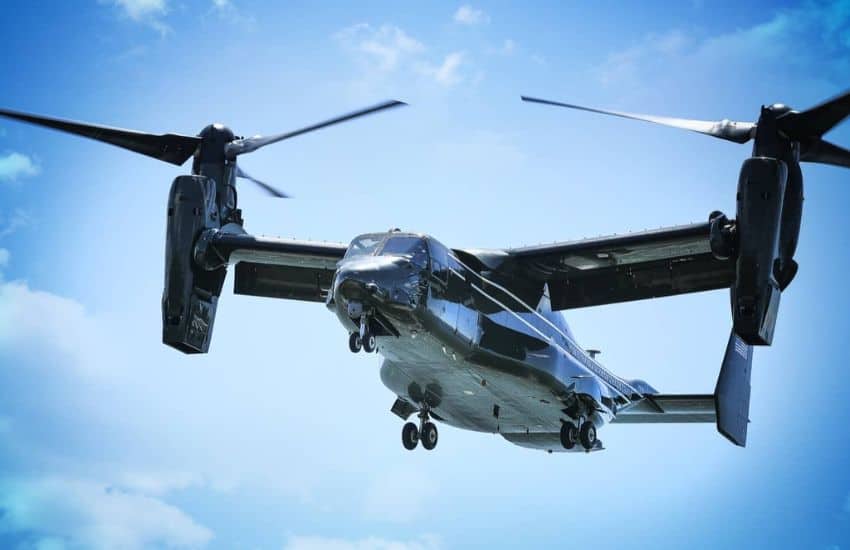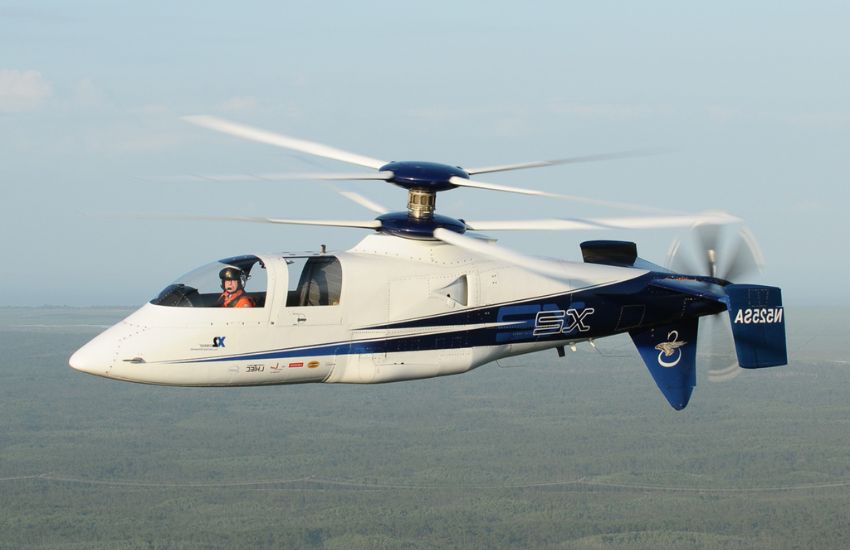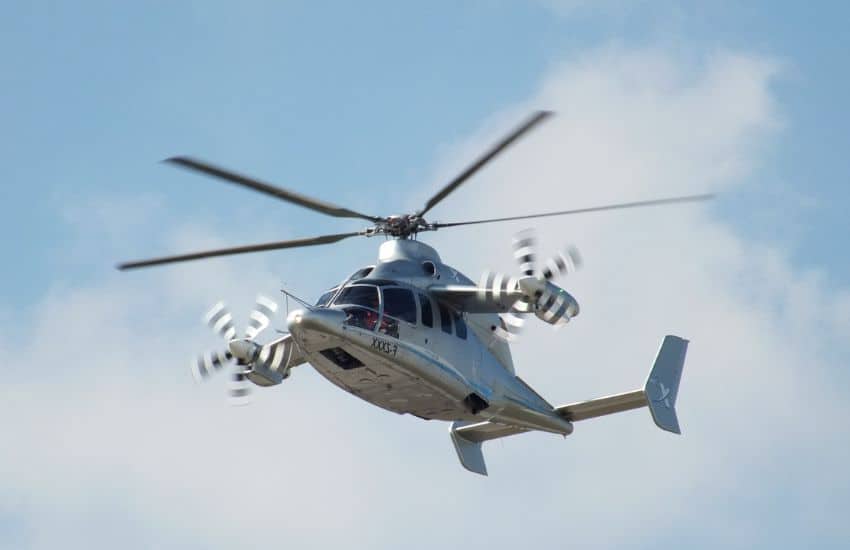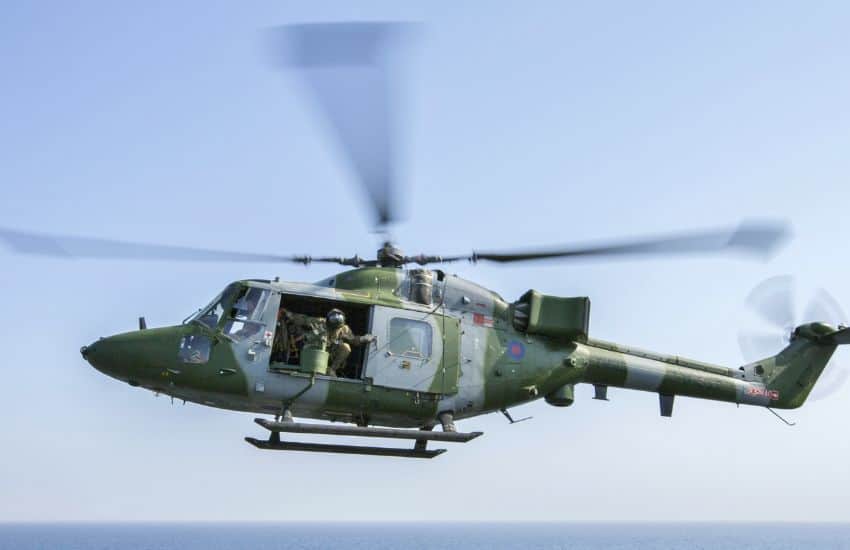Do you know what the fastest helicopter in the world is?
In 1986, a specially modified Westland Lynx, a multi-role military helicopter, reached a record-breaking speed of 249 mph. This military helicopter is still in service in some countries but no longer holds the speed record. Today, the fastest helicopter is the military Bell Boeing V-22 Osprey aircraft, a hybrid fixed-wing and rotary-wing aircraft, that can reach 351 mph.
For civilian helicopters it’s the AgustaWestland AW101 and AW139 that have brought high-speed capabilities to civilian operations, with top speeds of 192 mph and 190 mph.
This constant quest for speed has been a driving force in aviation since the Wright brothers first took to the skies. This pursuit has led to remarkable engineering feats, producing helicopters that can fly faster than some propeller-driven aircrafts.
Let’s explore the evolution, design, and capabilities of the world’s fastest helicopters.
Why Do Helicopters Need To Fly Fast?
Speed in helicopters is not just about breaking records; it’s a critical factor in mission profiles ranging from search and rescue to military operations. The ability to cover vast distances quickly can mean the difference between life and death in emergency medical services or the success of a military mission. As such, manufacturers have continually innovated to create helicopters that can fly faster, further, and more efficiently.
The Fastest Helicopters Today
The fastest helicopters today are mostly military aircrafts. Although there are a few civilian helicopters that I’ve named at the bottom of the list. Let’s explore the fastest ones.
Bell Boeing V-22 Osprey

The Bell Boeing V-22 Osprey stands out as an exceptional aircraft, though not a helicopter in the traditional sense. Its tiltrotor design allows it to take off and land like a helicopter while flying at the speeds of a turboprop airplane, reaching top speeds of 351 mph. The V-22 Osprey represents the pinnacle of hybrid technology, blurring the lines between fixed-wing and rotary-wing aircraft. This is the fastest helicopter today, although not a helicopter in the traditional sense but more of a hybrid plane.
Sikorsky X2

The Sikorsky X2, with its coaxial rotor system, has shattered speed expectations by reaching 299 mph. This helicopter’s design reduces the effects of retreating blade stall, a limiting factor in conventional helicopters’ speed. The X2’s pusher propeller and advanced aerodynamics have set a new standard for what is achievable in helicopter speed. The experimental Sikorsky X2 was an experiment that never actually went into production.
Eurocopter X3

Close on the heels of the X2 is the Eurocopter X3, which achieved a speed of 293 mph. This hybrid helicopter combines a traditional main rotor with side-mounted propellers, allowing it to maintain helicopter versatility while achieving airplane-like speeds. The X3’s innovative design has paved the way for new thinking in helicopter speed and efficiency. The helicopter was designed by Airbus only to break speed records and showcase that Airbus had the technology.
The Legacy of Westland Lynx

The Westland Lynx, a British icon, held the absolute speed record for helicopters for over three decades with a top speed of 249 mph. Its innovative design and powerful engines made it a formidable presence in the sky and a testament to the potential of rotary-wing speed.
Black Hawk and Chinook
The Sikorsky UH-60 Black Hawk and the Boeing CH-47 Chinook are two of the fastest traditional helicopters in military service. With top speeds of 222 mph and 196 mph, respectively, these helicopters have proven their worth in various operations, from combat missions to humanitarian aid, demonstrating that speed, power, and capacity can coexist in rotorcraft design.
The Next Generation: AW159 Lynx Wildcat and Beyond
The AW159 Lynx Wildcat, although slower than its predecessor, represents the next generation of military helicopters, balancing speed with advanced armor and avionics. With a top speed of 193 mph, the Wildcat exemplifies the modern military’s need for versatile and robust aircraft capable of high-speed operations.
Russian Rivals: Mi-35M and Mi-28N
Russia’s Mi-35M and Mi-28N, with top speeds of 193 mph and 186 mph, respectively, are a showcase of Russian engineering prowess in helicopter design. These helicopters are equipped for a range of missions, from troop transport to anti-armor operations, and are a testament to the global pursuit of speed in military aviation.
Civilian Speedsters: AW101 and AW139
The AgustaWestland AW101 and AW139 have brought high-speed capabilities to civilian operations, with top speeds of 192 mph and 190 mph. These helicopters serve various roles, from VIP transport to search and rescue, proving that speed is just as valuable in civilian contexts as it is in military ones.
Future of High-Speed Helicopters
The quest for speed continues with projects like the Sikorsky-Boeing SB>1 Defiant and the Bell V-280 Valor, which promise to push the boundaries of helicopter speed even further. These future aircraft aim to combine speed, agility, and advanced technology to create rotorcrafts that could revolutionize air travel and combat.
Challenges and Innovations in High-Speed Helicopter Design
Achieving high speeds in helicopters comes with significant challenges, such as aerodynamic limitations and mechanical complexities. Innovations like the adoption of composite materials, advanced computer modeling, and breakthroughs in propulsion have helped overcome these hurdles, leading to the incredible speeds we see today.
The world’s fastest helicopters showcase what’s possible by modern engineering and the relentless human pursuit of speed and performance. From the V-22 Osprey to the Sikorsky X2, these aircraft have redefined what’s possible in aviation, serving critical roles in both military and civilian operations. As technology advances, we can expect to see even faster helicopters in the future, each one building on the legacy of speed set by its predecessors.
Interested in Helicopters?
Learn more here
How far can a helicopter fly?
Helicopter headset review
How fast does a helicopter go?
How much is a helicopter?
How high can a helicopter fly?
